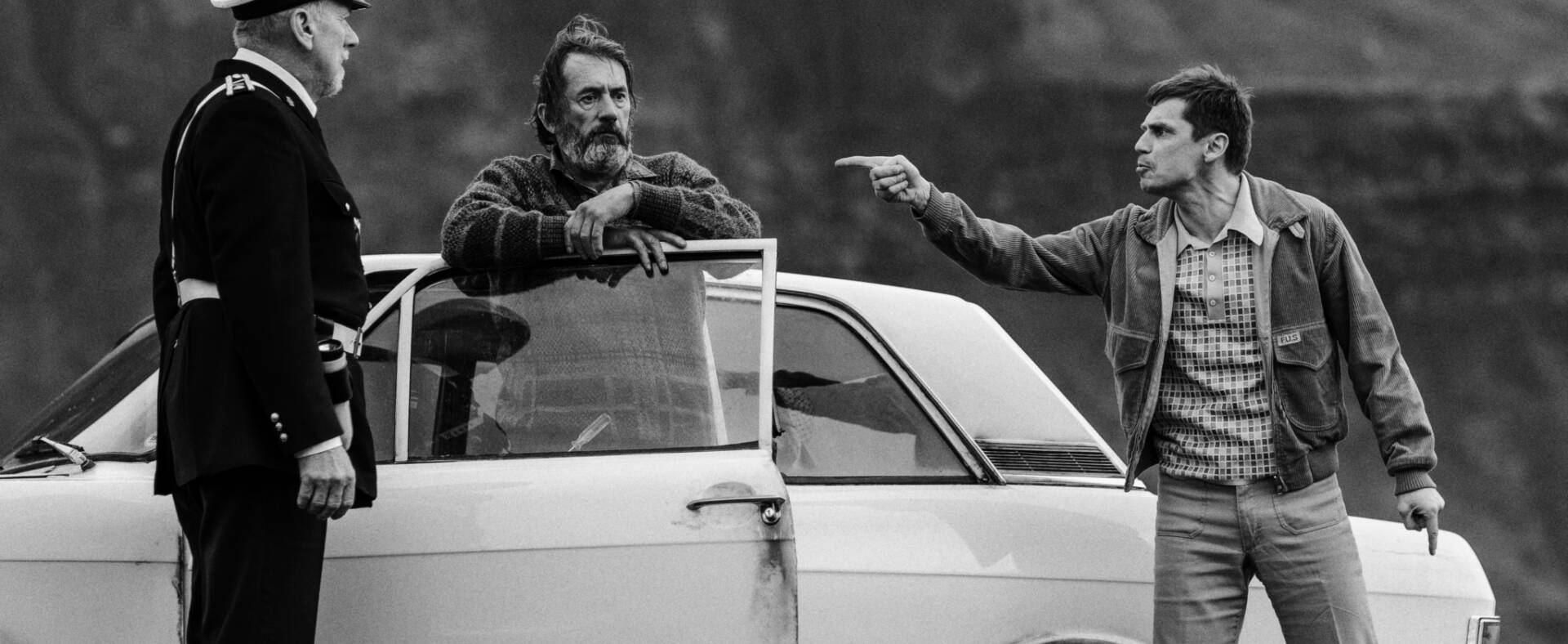Nominated to Nordic Council Film Prize 2023.
Summary
Jón is in his fifties, single and lives with his mother in an isolated and remote farm in the Westfjords of Iceland. The year is 1980 and they make a living by knitting sweaters which they sell to sustain the household. The atmosphere is dull and the only real life on the farm is the half-breed sheepdog. When the mother passes away, Jón’s obligation is to honour her last wish and take her body over to Iceland to the fishing village in the south where she grew up and wants to be buried. He dresses her in her finery and fur coat, paints her lips and eyes, and ties her up in the back of their old Ford Cortina. He then heads off, the dog by his side. The odd trio heads south, threading their way along the intimidating roads of the Westfjords and then through the rocky and barren highlands towards the south coast. They come across various obstacles and challenges along the way. It’s understood that Jón holds some grudges against his mother, and as the journey proceeds, the past is reflected on step by step. As they get closer to the final destination, Jón’s perspective on his life and existence has reached a new meaning and everything is changed forever.
Motivation
In Driving Mum, director Hilmar Oddsson makes efficient use of the traditional road movie structure to describe the inner journey of Jón, the film’s main character. On this journey, Jón must confront his extremely prosaic past and the life he never lived.
The film being in black and white serves the material well and mirrors Jón’s own bleakness as a person, while creating the mood of a fable rather than a perfectly realistic narrative. This mirroring of the main character’s inner life and its evolution is strengthened by the images of the landscape through which he drives. Starting out in narrow fjords with tall, jagged mountains and barely passable dirt roads, it passes through black sands and lava fields with little or no vegetation, before gradually broadening to include large vistas of open space and paved highways. This metaphorical process illustrates the gradual opening up of Jón’s mind and his growing realisation of all the things that might have been in his life.
Driving Mum is a dark comedy; surreal at times. Since the basics of the external story are extremely simple and clear, the director is free to be quite playful within that frame without the narrative losing steam and he makes excellent and effortless use of this freedom. The narrative remains light and lively despite the serious theme of a life tragically wasted. The sporadic but carefully placed appearances of the circus troupe represent the joy and happiness which disappeared from Jón’s life all those years ago and the music emphatically aids in getting all this across.
A seasoned director, Hilmar Oddsson obviously has excellent knowledge of every aspect of the film narrative and succeeds in telling a story of deep human tragedy with warmth and humour, often without words, making beautiful use of visual storytelling, aided by an especially effective musical score.
